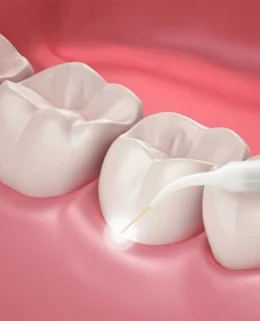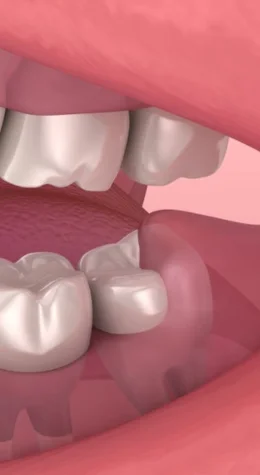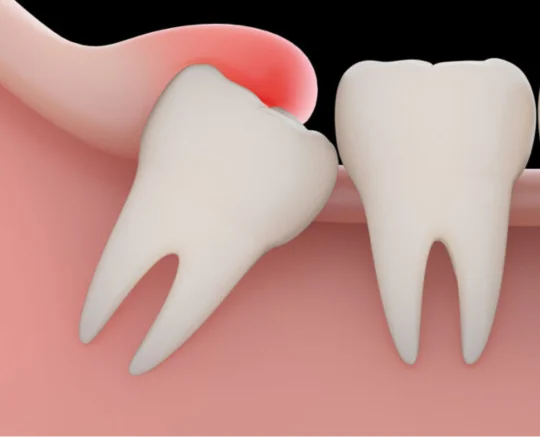jaw and Face
Oral and maxillofacial surgery is a branch of dental and medical specialties that focuses on the diagnosis, treatment, and management of structural and functional problems of the jaw, face, mouth, and neck. These surgeries can be performed for various reasons, including repairing trauma-related injuries, correcting congenital abnormalities, improving chewing and speech functions, and even for aesthetic purposes. Oral and maxillofacial surgery can enhance patients’ quality of life by addressing structural and functional issues. The choice of the appropriate surgical method depends on the specific conditions of the patient and should be performed by a qualified and experienced surgeon. Consulting with a surgeon and conducting thorough examinations before making a final decision is essential. Dental surgery includes any therapeutic surgery aimed at treating or correcting dental conditions. Below, we will highlight some of the most common dental surgeries.

Types of Jaw and Face Surgery
Sinus lift is a type of oral and dental surgery in which the height of the cavity of the maxillary teeth, which are located near the sinuses, is increased by raising the floor of the sinus cavity, which is done to improve the quality of implant installation.

Changes requested by the patient in the soft tissue, such as correcting their asymmetry on the left and right sides, removing pink moles, or injecting safe substances in the areas with the aim of improving the beauty of the lips and removing wrinkles in the facial area, are other measures of oral and dental surgery specialists.

This surgery is performed when we want to treat the root of the tooth while preserving the tooth. When the tooth does not respond to nerve extraction and after the root treatment, there is still an infection under the root, one of the treatment methods is epico surgery. In this surgery, the dentist prevents the spread of infection by cutting the tip of the tooth root and the infected tissues and vessels around it. This surgery should be performed by a maxillofacial surgeon or an endodontic specialist.

Dental implants are artificial tooth components that serve as a suitable replacement for areas without teeth. Oral and maxillofacial surgeons must be able to place implants in edentulous (toothless) areas. With an implant, the patient will experience a sensation similar to that of their natural teeth. A pure titanium post is embedded in the jawbone, and then a crown resembling the patient’s tooth is placed on top of it. In this treatment method, if the patient’s jawbone has deteriorated, a bone graft may be necessary to enable the patient to undergo implant placement.

Specialists in oral and dental surgery are able to remove the roots that have sunk into the space of the maxillary sinuses for any reason and cannot be removed by other dentists. These doctors can also remove the extra and disturbing tissues that may be bothering the patient.

When a dentist considers treatments such as implants for a patient, the first thing he checks is the patient’s jaw bones. In this type of surgery, the dentist first examines the patient’s jaw bones to ensure that the bone can withstand the pressure of the implant. If the width, height and shape of the bone are not suitable for implant treatment, the bone can be strengthened and reconstructed with oral surgery and the use of biomaterials, which is called bone grafting.

Typically, each individual has 2 wisdom teeth in the upper jaw and 2 wisdom teeth in the lower jaw, totaling 4 wisdom teeth. Sometimes, for reasons such as hereditary factors, childhood diseases, or a lack of coordination in the growth of the jawbone compared to the size of the teeth, these teeth remain impacted within the jaw. Additionally, a portion of their crowns may partially emerge in the mouth, in which case they are referred to as partially impacted wisdom teeth. An impacted wisdom tooth is one that has not been able to align properly with other teeth for various reasons since its eruption. The most suitable age for wisdom tooth extraction is typically under 20 years. It can also be performed between the ages of 20 and 40, but extracting wisdom teeth after the age of 40 is significantly more challenging. If the crown of the impacted wisdom tooth is not covered and is visible on the gum, the dentist can remove it more easily without the need for surgery. However, if the wisdom tooth is fully impacted, surgical extraction is necessary.






The stages of receiving services

Search for the service you want or choose from the available services.

In the appointment booking section, select and register your desired appointment.

After searching and registering your reservation, your confirmation will be announced via SMS and you can visit the clinic on the reserved date.
Some of your frequently asked questions
Maxillofacial surgery may be associated with temporary pain and discomfort. However, our doctors prescribe pain medication to reduce pain and make the patient more comfortable.
Recovery time after maxillofacial surgery depends on the type of surgery, its complexity, and the patient’s condition. It usually takes several weeks or months for the bone and tissues to fuse completely.
Yes, you may need special care after surgery, including taking prescribed medications, following oral hygiene tips, and avoiding strenuous activity.
Changes in the shape of the face depend on the type and goals of the surgery. For some surgeries there may be significant changes in appearance, while for others less changes are seen.
There is also a possibility of infection in the surgical area, but this risk is reduced by strictly following hygiene guidelines such as taking antibiotics and maintaining oral hygiene.
Everything about oral surgery
- What is alveoplasty?
- When is alveoplasty done?
- Advice for care after dental surgery
- How is dental soft tissue surgery?
- How is dental hard tissue surgery?
- Necessary care after hard tissue surgery
- What is exposing or exposing a hidden tooth?
- What are the signs of a hidden tooth?
- Methods of treating a tooth's impact
- Benefits and advantages of exposure bracketing
- What is a mouth abscess?
- Types of oral abscess
- What is the treatment of immature permanent tooth pulp (apexogenesis)?
- What is the treatment of immature permanent tooth pulp (apexification)?
- What is tooth root apexification?
What is alveoplasty?
Alveoplasty is a surgical procedure that reshapes and straightens the jaw where a tooth has been lost. The part of the jaw bone that houses the teeth is called the alveolus and plasty means molding, so alveoloplasty is the process of molding or reshaping the jaw.
When is alveoplasty done?
This method can be performed both during tooth extraction and after the site is completely healed. As you prepare to have your tooth extracted, your dentist will evaluate your jaw.
Advice for care after dental surgery
• After surgery, keep the sterile gauze on the tooth area for 20 minutes and then drink cold liquids or ice cream.
• Avoid sucking and emptying the mouth frequently.
Use your prescribed medicines on time and according to the dentist’s instructions.
• Consume soft and cool foods and liquids (cold juice, cold soup, ice cream, etc.) for 24 hours after surgery.
• After 7 to 10 days, visit your dentist to remove the stitches.
• You may have swelling, pain, bruising, and bruising for up to 48 hours after surgery, this is normal and will go away within 7 to 10 days.
• If you see bleeding gums or teeth in an uncontrollable and severe manner, see your dentist and do not use any medicine without a doctor’s prescription.
• Do not wash your mouth on the day of surgery and avoid brushing your teeth on the surgical site.
• Do not smoke cigarettes, hookah, pipe, etc. for 48 hours after surgery, and do not use a straw to drink liquids. Because the suction causes the clot to be removed and slows down the healing process and the surgical site will be painful.
How is dental soft tissue surgery?
This procedure is used when the root is located in the gum tissue and is not completely buried in the bone. When the tooth is situated beneath the gum tissue but is not impacted in the bone, it is referred to as soft tissue surgery. Soft tissue dental surgery is essentially a straightforward procedure; after making an incision and creating a flap, the tooth is removed using a specialized tool called an elevator. If there are any cysts or infections present, those areas are then drained using instruments known as curettes. After flushing the area with normal saline, it is stitched up. Patients are advised to take action sooner rather than later if they have a partially impacted tooth, as with age, the tooth is more likely to fuse to the jawbone (ankylosis), making extraction more difficult. Additionally, this condition can damage adjacent teeth, leading to abscesses, cysts, and bone destruction.
How is dental hard tissue surgery?
Surgery on hard tissue and the extraction of impacted wisdom teeth is quite challenging, and in some cases, it requires the presence of both an oral surgeon and a dentist. In this procedure, an incision is made in the relevant area, and after removing the surrounding bone, the tooth is divided and cut into sections to facilitate complete extraction. After the surgery, the patient must keep gauze over the extraction site for several hours and avoid talking. Additionally, applying ice packs to the outside of the surgical area can help ensure that the healing process occurs with minimal pain and discomfort in a shorter time frame.
Necessary care after hard tissue surgery
• Regular use of medicines prescribed by the dentist
• Complete oral and dental hygiene to reduce the risk of infection
Avoiding heavy activities for 7-8 days after surgery
• Avoiding smoking and alcohol
• Taking painkillers to reduce swelling and pain and using ice compresses in the first 24 hours after surgery
• Washing the mouth using mouthwash for two weeks
• Eating cool and soft foods that put less pressure on the surgical area and prevent pain and bleeding
• If the amount of pain, swelling, or bleeding increases, the patient must visit his or her dentist
What is exposing a hidden tooth?
A hidden tooth is a tooth that is not completely removed from the gum. Exposure of the underlying tooth is the treatment method to solve this problem. The causes of this condition can include increased density of teeth, abnormal growth pattern, or incorrect placement of teeth due to genetics and other issues. Hidden teeth are mostly seen in wisdom teeth and canines.
What are the signs of a hidden tooth?
Symptoms of impacted teeth may include pain, swelling, redness and sensitivity of the surrounding gums. In some cases, there may be no symptoms, and this issue can only be identified during routine dental examinations. If left untreated, impacted teeth can lead to various problems, such as infection, gum disease, damage to surrounding teeth, and irregularity. neighboring teeth Therefore, in case of doubt about the existence of this depression, it is necessary to visit a dentist.
Methods of treatment of a tooth impingement
1. Extraction: If the tooth is not extracted from the gum due to insufficient space, it may be necessary to extract it. This method is performed by the dentist according to the situation and conditions.
2. Exposure bracketing: In some cases, the doctor can use the exposure bracketing method to take out the hidden tooth from the gum and bring it to its correct position using brackets and stretching. This method is called latent tooth exposure.
Benefits and Advantages Of Exposure Bracketing
1- High success rate
2- Improving dental health
3- Treated beauty
4- The amount of pain is low
What Is a Mouth Abscess?
An abscess is a pus-filled cavity that contains dead tissue, white blood cells, and bacteria. Abscesses can develop in various parts of the body, including the mouth, and typically appear as a red, swollen, and painful mass. They can lead to swollen lymph nodes, fever, and conditions such as sepsis. A dental abscess is a pus-filled sac resulting from a bacterial infection. Depending on the causative factor, this type of abscess can manifest in different areas of the gums and teeth. Oral abscesses are usually accompanied by swelling, pain, and discomfort. Everyone should be cautious and consult a dental specialist for diagnosis and treatment upon noticing an abscess.
Types of oral abscess
A dental abscess typically appears due to an acute bacterial infection, causing severe pain as bacteria penetrate deep into the tissues through gum wounds or cavities in decayed teeth, leading to the formation of the abscess. There are generally two types of oral abscesses:
Periapical Abscess: This type usually occurs at the tip of the tooth root. A periapical abscess results from the delayed treatment of a root canal, inadequate previous dental repairs, or damage to the tooth. In such cases, bacteria invade the dental pulp, which contains nerves, connective tissue, and blood vessels.
Periodontal Abscess: This type occurs in the gums and alongside the tooth root. It is important to initiate treatment as soon as possible under the supervision of a dental specialist.
Treatment of Oral Abscess:
The treatment of an abscess should effectively control the infection. During this stage, the dentist may need to open and drain the abscess. By making a small incision, the abscess is opened and drained, followed by flushing with normal saline, which can help reduce the swelling.
• When the oral abscess is related to the denervation of the tooth root, the nerve should be treated by a dentist to eliminate the infection. In this procedure, the dentist removes the pulp inside the tooth and drains the abscess. After that, the pulp cavity and root canal are filled and restored by the dentist.
• Sometimes mouth abscess is caused by excessive decay and tooth loss, in which case the dentist pulls the damaged tooth and drains the abscess to cure the infection.
• According to the diagnosis of the specialist dentist and the progress of the oral abscess infection, antibiotics are prescribed to treat the infection, and the type and duration of its use depends on the opinion of the dentist. If the infection is limited to the contents of the abscess, there is no need to use antibiotics, but if the infection has penetrated to the parts of the jaw, antibiotics must be used.
• Among other cases that need to prescribe antibiotics, there are people with weak immune system. If they have mouth abscess, the dentist will prescribe antibiotics in addition to draining the abscess to go through the treatment period.
• Gum abscess pill: To treat the abscess and the resulting infection, usually antibiotic drugs such as amoxicillin and erythromycin are prescribed by the dentist, and their timely and complete use will help you recover quickly from the infection.
What is the treatment of immature permanent tooth pulp (apexogenesis)?
Apexogenesis – permanent tooth pulp treatment:
This treatment method is performed on severely decayed and damaged immature permanent teeth that have not yet fully developed their roots. It is used when the pulp within the tooth’s root canal is still alive and healthy. If the apexification method is used for the treatment of permanent tooth pulp, it allows for the normal and natural development of the apical area of the tooth root to continue. If the tooth root has not fully developed, the apical end of the tooth root will not be normal, making it impossible to perform root canal treatment and fill the tooth with specific dental materials. This method can be considered quite similar to pulpotomy procedures for primary (baby) teeth.
What is the treatment of immature permanent tooth pulp (apexification)?
Apexification – Treatment of Permanent Tooth Pulp
In the apexification treatment method for immature permanent teeth that are decayed and have not yet fully developed their roots, when infection and inflammation reach the pulp tissue of the tooth canal or if the tooth develops an abscess, the entire pulp of the tooth is removed. After this, the tooth is treated using one of the two methods below.
First Method: Sealing the end of the tooth canal by placing special dental materials at the apex of the tooth root. This treatment method is considerably faster than the second method, which will be mentioned later. Additionally, this method allows for the possibility of permanent root treatment and future restoration of the tooth in a limited number of sessions.
The second method: in this method, special materials are placed along the tooth canal and then you have to wait for a few months until the end of the tooth canal is blocked by the formation of hard dental tissue so that the permanent treatment of the tooth root is possible, of course, note that in this Treatment method If the duration of treatment is long, there is a possibility of fracture in the root of the tooth.
What is tooth root apexification?
Apexification of the tooth root as a treatment process on the apex of the root of the teeth whose growth process has not yet been completed and whose root is still open, due to the destruction or decay of the tooth root, which has also become infected, with this method. are treated
Early and timely treatment of infected tooth roots with the tooth root epexification method can have a great effect on the health of the gums around this tooth as well as the jaw bone.
Incomplete tooth growth and tooth roots remaining open due to insufficient growth causes it to become infected and presents difficult treatment to dentists.
To treat the apex of the tooth root, it is necessary for the dental surgeon to reach the end of the root of the tooth and close the end of the root with special materials for the initial treatment. This treatment starts with closing the end of the root and continues with eliminating its infection.
It may be necessary for the dental specialist to freeze the relevant tooth by closing the roots of the tooth and continue with dressing and prescribing medicine until the infection is removed and it dries up. After the infection is removed, the doctor will proceed with the treatment process.
